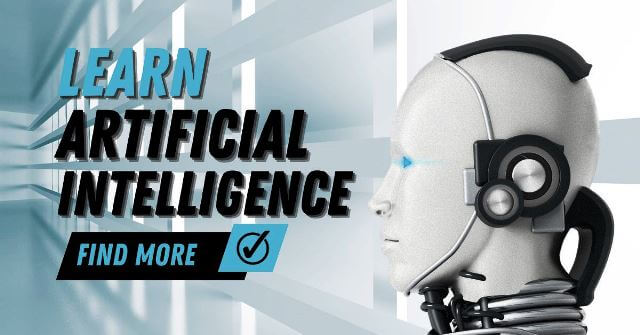The realm of Artificial Intelligence (AI) has transcended its buzzword status to become a transformative technology, touching various facets of our lives. From healthcare to finance, marketing to customer service, AI tools are now essential in enhancing efficiency and aiding in decision-making.
Table of Contents
- The Fundamentals of Artificial Intelligence
- How to learn AI from scratch
- Mastering the Prerequisites
- Mastering Data Processing
- Diversifying Your AI Path
- How to Learn AI Tools: A Beginner’s Guide
- Real-World Applications of AI Tools
- Building Skills: Hands-On Practice
- Staying Updated in the Dynamic AI Field
- Conclusion
If you’re curious about diving into the world of AI and eager to explore how to learn AI tools you’re in the right place. If you’re an aspiring data scientist, machine learning engineer, researching AI, or just an AI enthusiast, this manual is for you.
In this guide, we’ll walk you through the process, from understanding the basics to mastering AI tools.
The Fundamentals of Artificial Intelligence
First, let’s grasp the essence of Artificial Intelligence. AI is all about emulating human intelligence within machines. It takes data and applies programming to solve complex problems. This field includes machine learning, deep learning, and natural language processing, enabling computers to “learn” from experience and perform tasks akin to human abilities, often with greater efficiency.
How to learn AI from scratch
Learning AI can be an exciting path, but it comes with its challenges. AI is a vast field with numerous subtopics, and many concepts involve advanced math and formal logic, which can appear daunting. To navigate through this domain, we’ve broken down the AI journey into manageable steps.
Mastering the Prerequisites
Before diving into AI, you should have a solid grounding in certain areas:
- Computer Science Fundamentals: You need to understand the core principles of computer science, including theory and algorithms like Boolean algebra, computer hardware systems, digital logics, computer and network architecture, software systems like programming languages and operating systems.
- Probability and Statistics: These concepts are essential for AI as they deal with data analysis, interpretation, and reasoning under uncertainty. Probability and statistics for AI include some of the following topics:
- Numerical and graphical description of data
- Elements of probability
- Sampling distributions
- Probability distribution functions
- Estimation of population parameters
- Hypothesis tests
- Mathematics: Fields like linear algebra, calculus, probability, and differential equations are fundamental to AI algorithms.
- Programming: Familiarize yourself with programming languages like Python, Java, R, and others suitable for AI applications.
- Data Structures: AI requires input in the form of data. Learn how to organize and manage data efficiently using structures like arrays, linked lists, stack, queue and more.
- Algorithms: Algorithms provide step-by-step procedures for calculations and problem-solving, essential for machine learning. . Algorithms can use data mining and pattern recognition to make recommendations. This is how Facebook decides what shows up in your feed.
- Data Manipulation: AI relies on data sets to learn and to make predictions, so you’ll need to be skilled at structuring data into a useful format effectively and manipulate it for analysis. SQL is the programming language used to manage databases, and R is frequently used in data science applications.
Mastering Data Processing
Once you’re comfortable with the prerequisites, focus on data processing techniques, such as Principal Component Analysis, Dimensional Reduction, Normalization, and more. These methods help you convert raw, unstructured data into structured formats, crucial for applying Machine Learning algorithms.
Diversifying Your AI Path
With the foundation in place, you have the opportunity to explore various directions within AI, including:
- Machine Learning Engineer: Develop AI systems that automate predictive models and refine processes through extensive data analysis.
- Data Scientist: Master the art of finding patterns in data, making you adept at delivering the right algorithms and insights.
- Data Engineer: Build and maintain data infrastructure by designing pipelines for transforming data into usable formats.
How to Learn AI Tools: A Beginner’s Guide
Learning AI tools for free is an exciting journey with a multitude of online resources:
- Online Courses: Platforms like Coursera, edX, and Udacity offer free introductory AI courses.
- YouTube: A treasure trove of AI knowledge with tutorials and lectures from experts.
- Documentation: Developers often provide extensive resources for AI tools, accompanied by instructional materials.
- AI Communities: Engage with AI enthusiasts and experts on platforms like Reddit and Stack Overflow.
- Hackathons and Webinars: Participate in hands-on events to gain practical experience and expand your network.
Real-World Applications of AI Tools
To truly master AI tools, you need hands-on experience in areas like content creation, data analysis, and automation. Here are practical applications to hone your skills:
- Content Creation and Copywriting: Use AI-powered tools like GPT-3 to generate content and practice your skills.
- Data Analysis and Visualization: Utilize tools like Pandas and Matplotlib for data analysis and visualization, starting with readily available datasets.
- Automation and Chatbots: Create simple chatbots using platforms like ChatGPT and experiment with automating tasks using AI scripts.
Building Skills: Hands-On Practice
Learning AI is most effective through hands-on projects. Here is a way to develop your skills:
- Creating AI Projects: Begin with small tasks and gradually work your way up to more complex projects. Practical applications deepen your understanding.
- Community Collaborations: Join AI communities and collaborate with peers on projects. Learning from others and receiving feedback is invaluable.
- Learning from Mistakes: Expect challenges and errors along the way. Embrace setbacks as opportunities for growth.
Staying Updated in the Dynamic AI Field
AI is ever-evolving. To stay relevant, consider these strategies:
- Continuous Learning: Commit to lifelong learning, enroll in advanced courses, and stay informed about the latest developments in AI.
- Networking: Build a professional network in the AI field through meetups, webinars, and conferences to open doors to new opportunities and collaborations.
- Experimentation: Maintain curiosity and regularly experiment with new AI tools and techniques to expand your knowledge.
Conclusion
The journey of learning AI tools is both fulfilling and exhilarating. Whether you seek a career change or wish to enhance your skill set, the world of AI offers an exciting path with limitless possibilities. Remember, it’s not just about reaching your destination; the process, how to learn AI tools itself is an adventure.
Embrace the hands-on approach, explore courses, and engage in AI projects to accelerate your learning and develop essential skills in problem-solving, critical thinking, and creativity.



